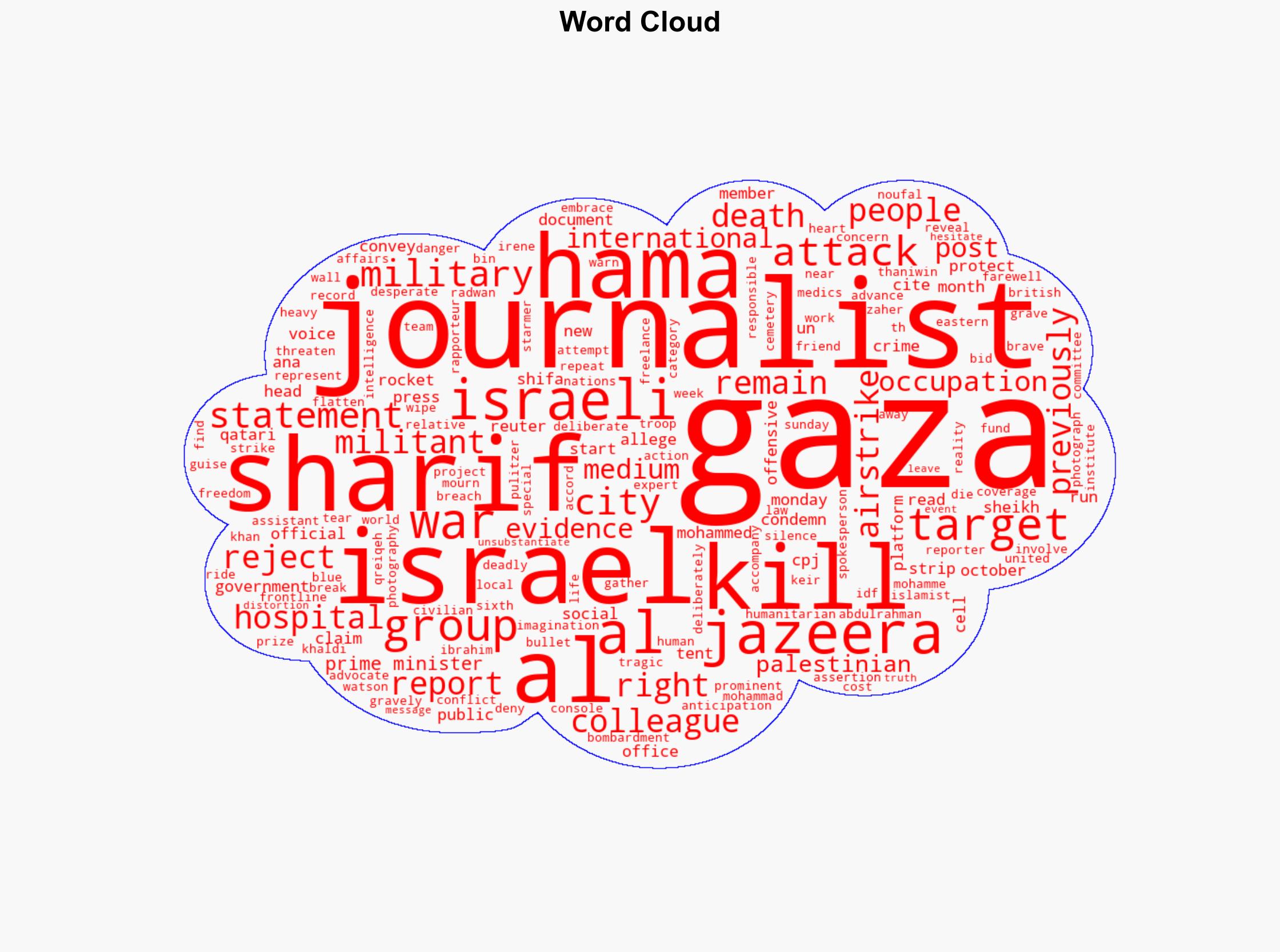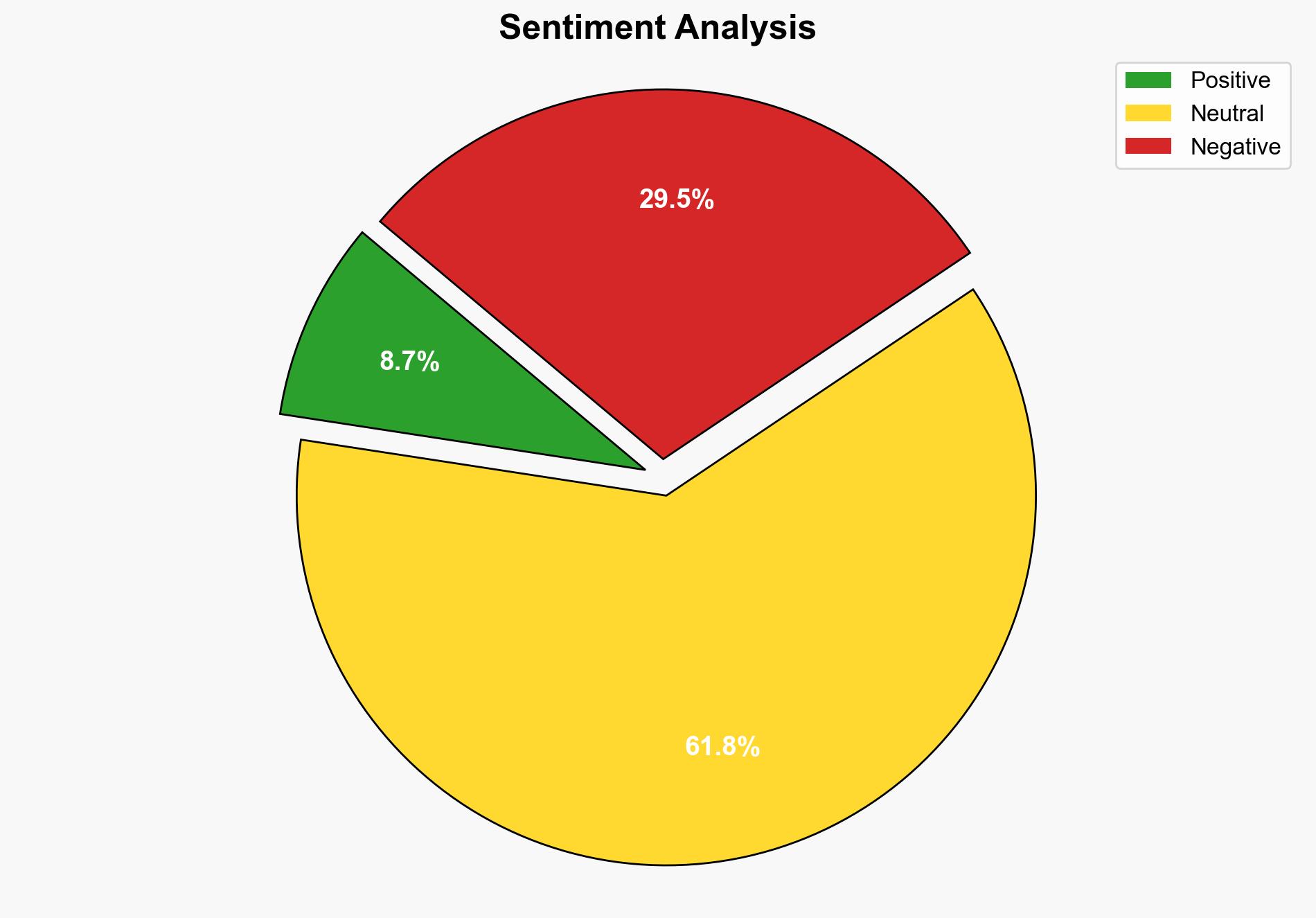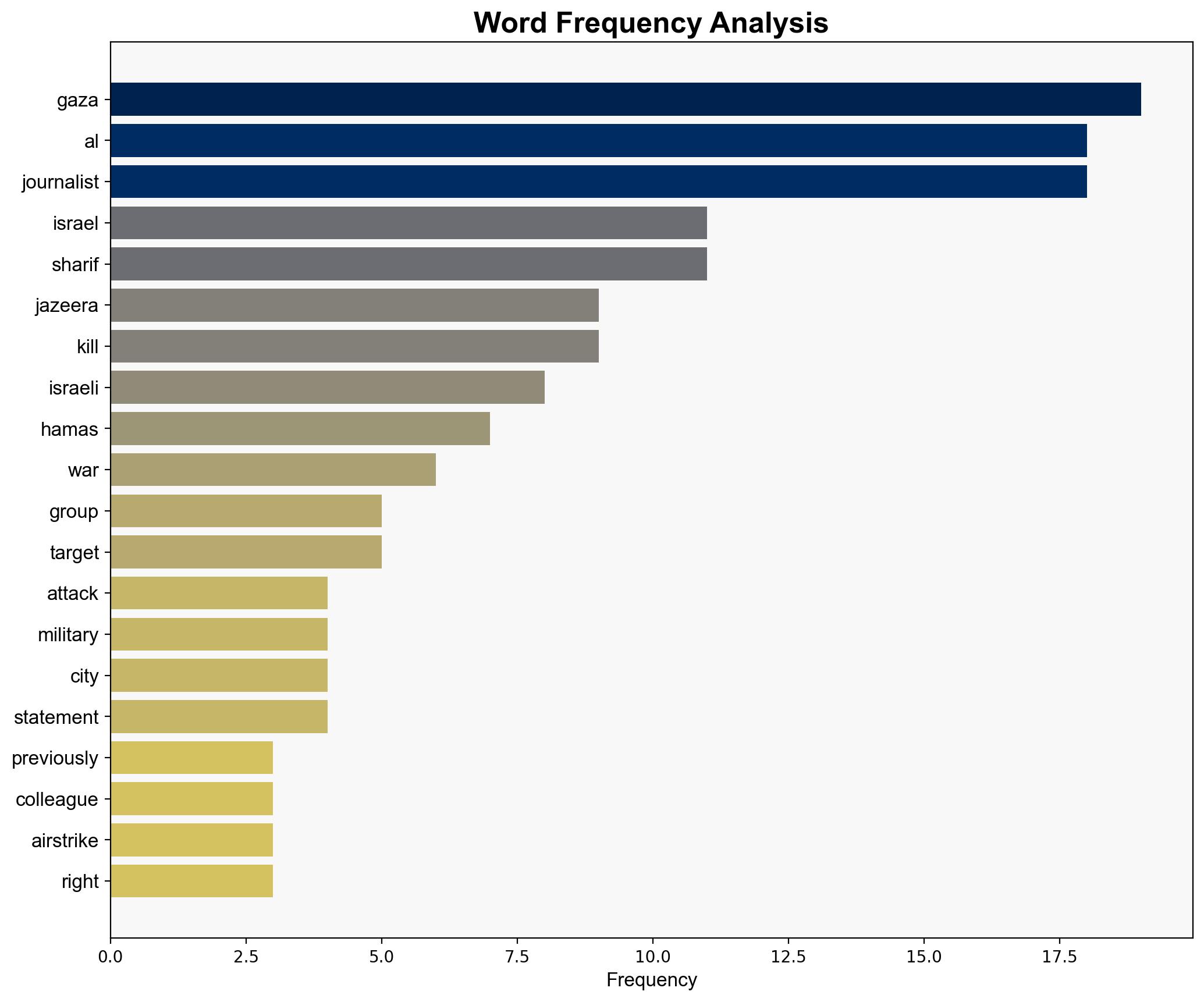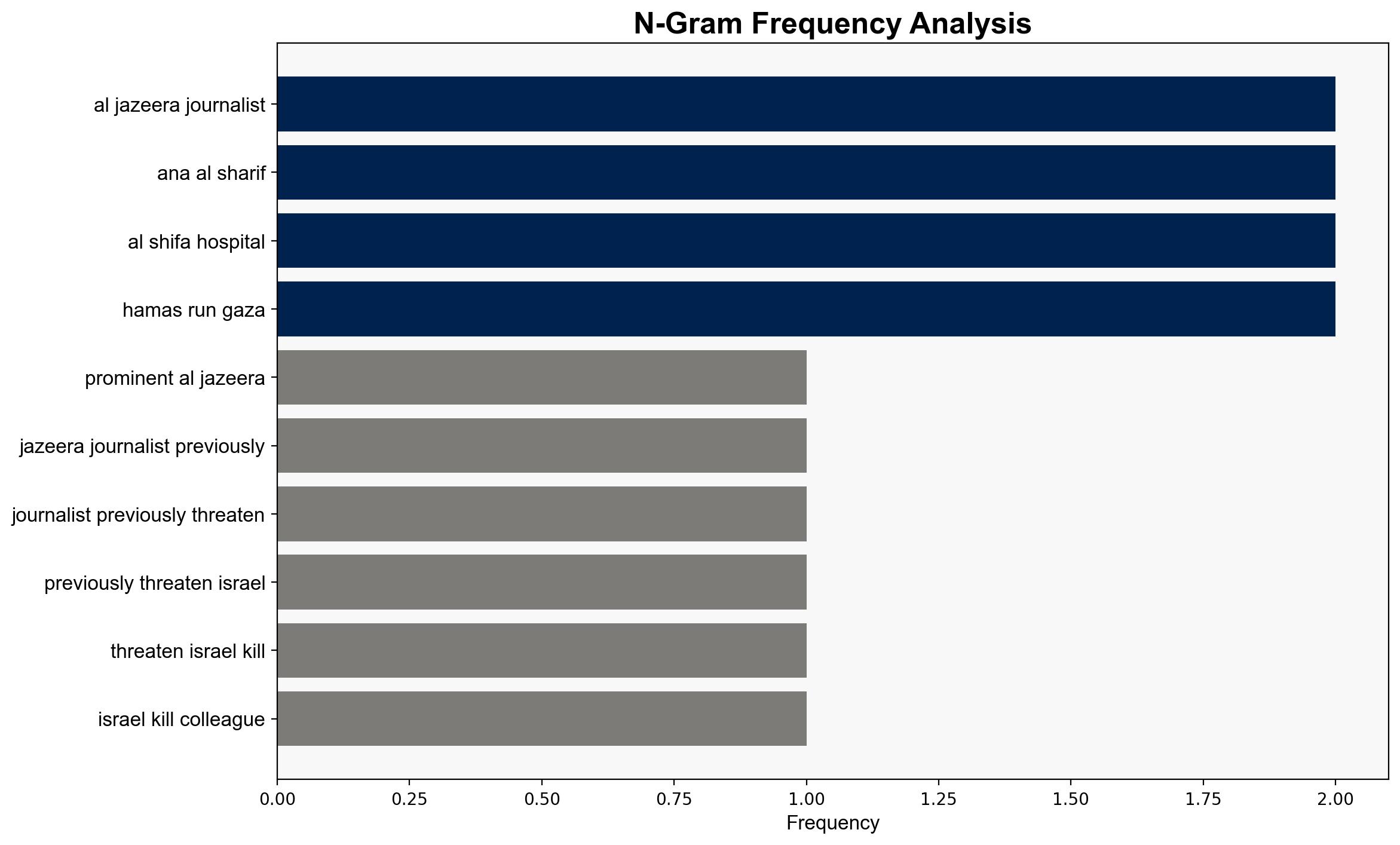Israel kills Al Jazeera journalists in air strike on tent in Gaza – The Irish Times
Published on: 2025-08-11
Intelligence Report: Israel kills Al Jazeera journalists in air strike on tent in Gaza – The Irish Times
1. BLUF (Bottom Line Up Front)
The incident involving the death of Al Jazeera journalists in Gaza presents two primary hypotheses: one suggesting deliberate targeting by Israel, and the other asserting collateral damage during a military operation against Hamas. The analysis leans towards the latter hypothesis, supported by Israel’s consistent denial of targeting journalists and the context of ongoing military operations. Confidence in this assessment is moderate due to conflicting reports and the highly politicized environment. It is recommended to pursue independent verification of claims and enhance diplomatic engagement to mitigate further escalation.
2. Competing Hypotheses
Hypothesis 1: Israel deliberately targeted Al Jazeera journalists to silence media coverage in Gaza. This is supported by statements from Al Jazeera, condemnation from international bodies, and the context of previous threats against journalists.
Hypothesis 2: The journalists were unintended casualties in an Israeli military operation targeting a Hamas militant cell. Israel claims the strike was aimed at a legitimate military target, and the presence of journalists was incidental.
Using ACH 2.0, Hypothesis 2 is more supported due to the lack of direct evidence of intent to target journalists and Israel’s historical pattern of denying such allegations. However, the presence of journalists in conflict zones inherently increases the risk of collateral damage.
3. Key Assumptions and Red Flags
– **Assumptions:** Hypothesis 1 assumes Israel has a strategic interest in silencing media, while Hypothesis 2 assumes intelligence was accurate and the strike was justified.
– **Red Flags:** Lack of independent verification of the events, potential bias in media reporting, and the politicized nature of the conflict.
– **Blind Spots:** The possibility of misinformation or propaganda influencing narratives on both sides.
4. Implications and Strategic Risks
The incident could exacerbate tensions between Israel and media organizations, potentially leading to increased scrutiny and international pressure. It may also fuel anti-Israel sentiment and bolster support for Hamas. The risk of further escalation in the region remains high, with potential impacts on regional stability and international diplomatic relations.
5. Recommendations and Outlook
- Encourage independent investigations to establish facts and reduce misinformation.
- Engage in diplomatic dialogue to address media safety in conflict zones.
- Scenario Projections:
- Best Case: Independent verification leads to de-escalation and improved media safety protocols.
- Worst Case: Continued targeting of journalists increases international condemnation and regional instability.
- Most Likely: Ongoing tension with sporadic incidents affecting media operations and diplomatic relations.
6. Key Individuals and Entities
– Ana Al Sharif
– Mohammad Al Khaldi
– Sheikh Mohammed bin Abdulrahman Al Thani
– Irene Khan
– Mohammed Qreiqeh
– Ibrahim Zaher
– Mohammed Noufal
7. Thematic Tags
national security threats, media safety, regional conflict, international law, press freedom





